Video Games Have Helped Through A Lot. I'm A Bit Of A Dreamer So When The World Constantly Doesn't Match
Video games have helped through a lot. I'm a bit of a dreamer so when the world constantly doesn't match up to my over optimistic expectations, I can get quite negative and overthink things.
There was a time in my life where I saw a flight of stairs and the thought falling down and breaking my neck didn't faze me. I literally felt nothing, even when I tried. I was numb and the closest reason for not seeing what might happen was the chance I might get in someone's way. My opinion of myself was that apathetic. Video games help me over come this by allowing me to get out of my own head. To escape my own thoughts so I could learn to actually care about living not merely existing because killing myself seemed like it might be inconvenient for others.
I knew it was bad for me to think such a way, but I couldn't stop the negative thoughts crawling into my head. But thanks to video games and the stories they conveyed. This allow me to stop thinking I'm not good enough, and it stopped me from believing don't deserve the life I have while others suffer.
Video games allow me to stop focusing on all the negatives and see the positives in life. The Persona series also taught me that no one can survive alone, and the reason I felt the way I did was because I bottled everything inside myself until I reached breaking point. I didn't talk to people, because I didn't want to annoyed them, but that was wrong of me to do.
In summary, video games like Fire Emblem, Persona and Dragon Age taught me that some form of friendship is necessary for survival. I might not have friends yet, but I'm actually looking now. So it's quite an improvement.
Sorry for writing so much. I hope this helps.
PLEASE REBLOG IF VIDEO GAMES HAVE A POSITIVE IMPACT ON YOU
This is for an English paper I need to write.
And like if not
More Posts from Libraryofalexandira11 and Others
reblogging for writing tips
Words for Skin Tone | How to Describe Skin Color
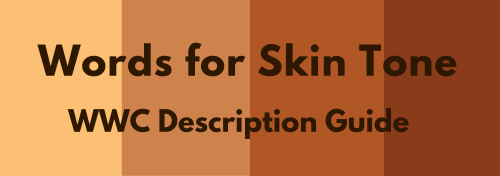
We discussed the issues describing People of Color by means of food in Part I of this guide, which brought rise to even more questions, mostly along the lines of “So, if food’s not an option, what can I use?” Well, I was just getting to that!
This final portion focuses on describing skin tone, with photo and passage examples provided throughout. I hope to cover everything from the use of straight-forward description to the more creatively-inclined, keeping in mind the questions we’ve received on this topic.
Standard Description
Basic Colors

Pictured above: Black, Brown, Beige, White, Pink.
“She had brown skin.”
This is a perfectly fine description that, while not providing the most detail, works well and will never become cliché.
Describing characters’ skin as simply brown or beige works on its own, though it’s not particularly telling just from the range in brown alone.
Complex Colors
These are more rarely used words that actually “mean” their color. Some of these have multiple meanings, so you’ll want to look into those to determine what other associations a word might have.

Pictured above: Umber, Sepia, Ochre, Russet, Terra-cotta, Gold, Tawny, Taupe, Khaki, Fawn.
Complex colors work well alone, though often pair well with a basic color in regards to narrowing down shade/tone.
For example: Golden brown, russet brown, tawny beige…
As some of these are on the “rare” side, sliding in a definition of the word within the sentence itself may help readers who are unfamiliar with the term visualize the color without seeking a dictionary.
“He was tall and slim, his skin a russet, reddish-brown.”
Comparisons to familiar colors or visuals are also helpful:
“His skin was an ochre color, much like the mellow-brown light that bathed the forest.”
Modifiers
Modifiers, often adjectives, make partial changes to a word.The following words are descriptors in reference to skin tone.
Dark - Deep - Rich - Cool
Warm - Medium - Tan
Fair - Light - Pale
Rich Black, Dark brown, Warm beige, Pale pink…
If you’re looking to get more specific than “brown,” modifiers narrow down shade further.
Keep in mind that these modifiers are not exactly colors.
As an already brown-skinned person, I get tan from a lot of sun and resultingly become a darker, deeper brown. I turn a pale, more yellow-brown in the winter.
While best used in combination with a color, I suppose words like “tan” “fair” and “light” do work alone; just note that tan is less likely to be taken for “naturally tan” and much more likely a tanned White person.
Calling someone “dark” as description on its own is offensive to some and also ambiguous. (See: Describing Skin as Dark)
Undertones
Undertones are the colors beneath the skin, seeing as skin isn’t just one even color but has more subdued tones within the dominating palette.
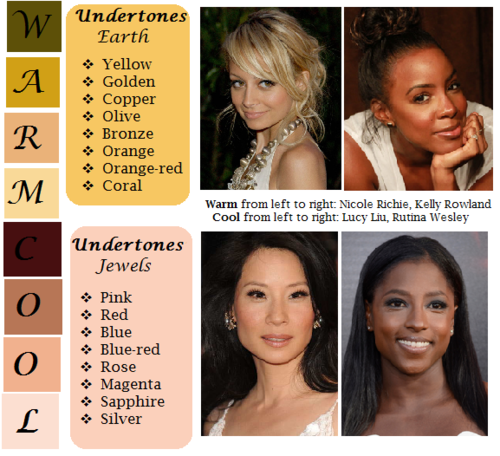
pictured above: warm / earth undertones: yellow, golden, copper, olive, bronze, orange, orange-red, coral | cool / jewel undertones: pink, red, blue, blue-red, rose, magenta, sapphire, silver.
Mentioning the undertones within a character’s skin is an even more precise way to denote skin tone.
As shown, there’s a difference between say, brown skin with warm orange-red undertones (Kelly Rowland) and brown skin with cool, jewel undertones (Rutina Wesley).
“A dazzling smile revealed the bronze glow at her cheeks.”
“He always looked as if he’d ran a mile, a constant tinge of pink under his tawny skin.”
Standard Description Passage
“Farah’s skin, always fawn, had burned and freckled under the summer’s sun. Even at the cusp of autumn, an uneven tan clung to her skin like burrs. So unlike the smooth, red-brown ochre of her mother, which the sun had richened to a blessing.”
-From my story “Where Summer Ends” featured in Strange Little Girls
Here the state of skin also gives insight on character.
Note my use of “fawn” in regards to multiple meaning and association. While fawn is a color, it’s also a small, timid deer, which describes this very traumatized character of mine perfectly.
Though I use standard descriptions of skin tone more in my writing, at the same time I’m no stranger to creative descriptions, and do enjoy the occasional artsy detail of a character.
Creative Description
Whether compared to night-cast rivers or day’s first light…I actually enjoy seeing Characters of Colors dressed in artful detail.
I’ve read loads of descriptions in my day of white characters and their “smooth rose-tinged ivory skin”, while the PoC, if there, are reduced to something from a candy bowl or a Starbucks drink, so to actually read of PoC described in lavish detail can be somewhat of a treat.
Still, be mindful when you get creative with your character descriptions. Too many frills can become purple-prose-like, so do what feels right for your writing when and where. Not every character or scene warrants a creative description, either. Especially if they’re not even a secondary character.
Using a combination of color descriptions from standard to creative is probably a better method than straight creative. But again, do what’s good for your tale.
Natural Settings - Sky

Pictured above: Harvest Moon -Twilight, Fall/Autumn Leaves, Clay, Desert/Sahara, Sunlight - Sunrise - Sunset - Afterglow - Dawn- Day- Daybreak, Field - Prairie - Wheat, Mountain/Cliff, Beach/Sand/Straw/Hay.
Now before you run off to compare your heroine’s skin to the harvest moon or a cliff side, think about the associations to your words.
When I think cliff, I think of jagged, perilous, rough. I hear sand and picture grainy, yet smooth. Calm. mellow.
So consider your character and what you see fit to compare them to.
Also consider whose perspective you’re describing them from. Someone describing a person they revere or admire may have a more pleasant, loftier description than someone who can’t stand the person.
“Her face was like the fire-gold glow of dawn, lifting my gaze, drawing me in.”
“She had a sandy complexion, smooth and tawny.”
Even creative descriptions tend to draw help from your standard words.
Flowers
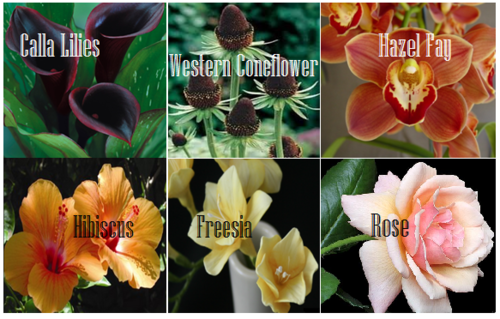
Pictured above: Calla lilies, Western Coneflower, Hazel Fay, Hibiscus, Freesia, Rose
It was a bit difficult to find flowers to my liking that didn’t have a 20 character name or wasn’t called something like “chocolate silk” so these are the finalists.
You’ll definitely want to avoid purple-prose here.
Also be aware of flowers that most might’ve never heard of. Roses are easy, as most know the look and coloring(s) of this plant. But Western coneflowers? Calla lilies? Maybe not so much.
“He entered the cottage in a huff, cheeks a blushing brown like the flowers Nana planted right under my window. Hazel Fay she called them, was it?”
Assorted Plants & Nature

Pictured above: Cattails, Seashell, Driftwood, Pinecone, Acorn, Amber
These ones are kinda odd. Perhaps because I’ve never seen these in comparison to skin tone, With the exception of amber.
At least they’re common enough that most may have an idea what you’re talking about at the mention of “pinecone.“
I suggest reading out your sentences aloud to get a better feel of how it’ll sounds.
“Auburn hair swept past pointed ears, set around a face like an acorn both in shape and shade.”
I pictured some tree-dwelling being or person from a fantasy world in this example, which makes the comparison more appropriate.
I don’t suggest using a comparison just “cuz you can” but actually being thoughtful about what you’re comparing your character to and how it applies to your character and/or setting.
Wood

Pictured above: Mahogany, Walnut, Chestnut, Golden Oak, Ash
Wood can be an iffy description for skin tone. Not only due to several of them having “foody” terminology within their names, but again, associations.
Some people would prefer not to compare/be compared to wood at all, so get opinions, try it aloud, and make sure it’s appropriate to the character if you do use it.
“The old warlock’s skin was a deep shade of mahogany, his stare serious and firm as it held mine.”
Metals

Pictured above: Platinum, Copper, Brass, Gold, Bronze
Copper skin, brass-colored skin, golden skin…
I’ve even heard variations of these used before by comparison to an object of the same properties/coloring, such as penny for copper.
These also work well with modifiers.
“The dress of fine white silks popped against the deep bronze of her skin.”
Gemstones - Minerals
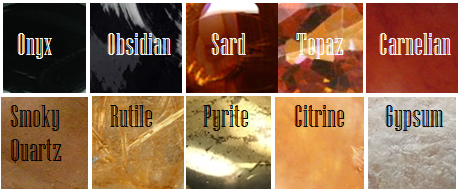
Pictured above: Onyx, Obsidian, Sard, Topaz, Carnelian, Smoky Quartz, Rutile, Pyrite, Citrine, Gypsum
These are trickier to use. As with some complex colors, the writer will have to get us to understand what most of these look like.
If you use these, or any more rare description, consider if it actually “fits” the book or scene.
Even if you’re able to get us to picture what “rutile” looks like, why are you using this description as opposed to something else? Have that answer for yourself.
“His skin reminded her of the topaz ring her father wore at his finger, a gleaming stone of brown, mellow facades.”
Physical Description
Physical character description can be more than skin tone.
Show us hair, eyes, noses, mouth, hands…body posture, body shape, skin texture… though not necessarily all of those nor at once.
Describing features also helps indicate race, especially if your character has some traits common within the race they are, such as afro hair to a Black character.
How comprehensive you decide to get is up to you. I wouldn’t overdo it and get specific to every mole and birthmark. Noting defining characteristics is good, though, like slightly spaced front teeth, curls that stay flopping in their face, hands freckled with sunspots…
General Tips
Indicate Race Early: I suggest indicators of race be made at the earliest convenience within the writing, with more hints threaded throughout here and there.
Get Creative On Your Own: Obviously, I couldn’t cover every proper color or comparison in which has been “approved” to use for your characters’ skin color, so it’s up to you to use discretion when seeking other ways and shades to describe skin tone.
Skin Color May Not Be Enough: Describing skin tone isn’t always enough to indicate someone’s ethnicity. As timeless cases with readers equating brown to “dark white” or something, more indicators of race may be needed.
Describe White characters and PoC Alike: You should describe the race and/or skin tone of your white characters just as you do your Characters of Color. If you don’t, you risk implying that White is the default human being and PoC are the “Other”).
PSA: Don’t use “Colored.” Based on some asks we’ve received using this word, I’d like to say that unless you or your character is a racist grandmama from the 1960s, do not call People of Color “colored” please.
Not Sure Where to Start? You really can’t go wrong using basic colors for your skin descriptions. It’s actually what many people prefer and works best for most writing. Personally, I tend to describe my characters using a combo of basic colors + modifiers, with mentions of undertones at times. I do like to veer into more creative descriptions on occasion.
Want some alternatives to “skin” or “skin color”? Try: Appearance, blend, blush, cast, coloring, complexion, flush, glow, hue, overtone, palette, pigmentation, rinse, shade, sheen, spectrum, tinge, tint, tone, undertone, value, wash.
Skin Tone Resources
List of Color Names
The Color Thesaurus
Skin Undertone & Color Matching
Tips and Words on Describing Skin
Photos: Undertones Described (Modifiers included)
Online Thesaurus (try colors, such as “red” & “brown”)
Don’t Call me Pastries: Creative Skin Tones w/ pics I
Writing & Description Guides
WWC Featured Description Posts
WWC Guide: Words to Describe Hair
Writing with Color: Description & Skin Color Tags
7 Offensive Mistakes Well-intentioned Writers Make
I tried to be as comprehensive as possible with this guide, but if you have a question regarding describing skin color that hasn’t been answered within part I or II of this guide, or have more questions after reading this post, feel free to ask!
~ Mod Colette
Saw this thought I’d an addition... and Reblog this to remember it. Because I thought it was pretty. Heart Girls: All of the above more or less.
Types of Girls: Pretty Things edition
Flower girls; loves art and thunderstorms, can be apathetic, writes heartfelt birthday cards, feels misunderstood, has a pretty room, overthinks, keeps sentimental items, obsessed with novelty
Rainbow girls; sensitive, passionate, has a weakness for cats, likes coffee shops and cakes, loves deeply, naps a lot, loves being organized, hides their sadness, dewy skin, knows exactly how others feel
Star girls; good at writing, can be distant, stares into space a lot, funny, can be self destructive, keeps secrets, tells you their favorite songs, has a denim jacket, a bit pessimistic, romanticizes everything
Butterfly girls; tries to be happy, daydreams, wants to learn languages, loves their friends but still feels lonely, thinks in metaphors, highly ambitious, idealist, wishes they were prettier and smarter
Sunset girls; hurt easily but resilient, gives genuine compliments, loves shopping, takes amazing photos, likes deep conversations and old cities, cares too much about others’ opinions, pure-hearted
Such a great visual

an explorers pack for every reasonable adventurer
Wow 😯
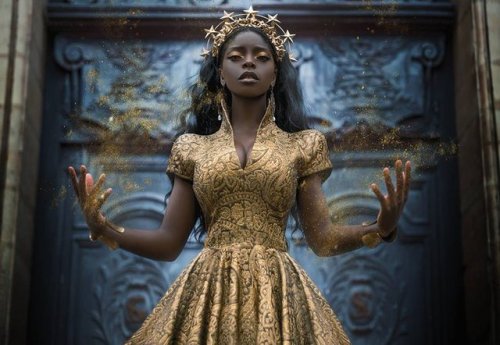
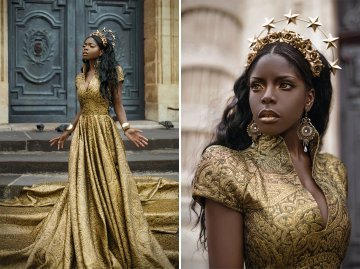
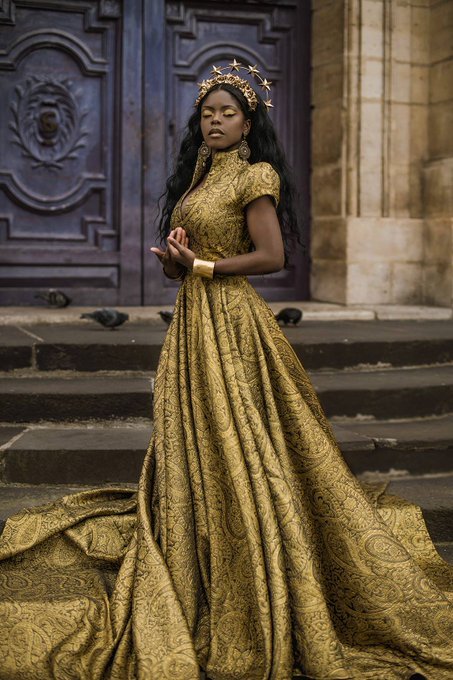
Sol Koroleva 𝓈𝒽𝑒𝓇 @soldatsot https://twitter.com/soldatsot/status/1123606012060098561
This is amazing! Reblogging so I don't forget it.
A Persona 4 Arena Ultimax appearance in episode 2 of the anime “Gamers!”
This is amazing!







back on my bullshit, hc/au that makoto becomes detective tatsuya’s assistant
he’s much older here than the prev comic i posted; i like to think he’d become a hardboiled detective like dojima!
feat. naoto and a bonus akihiko/chie duo + katsuya
Also human friends cooking their Kitsune spirt friends lots of dishes that they like, tofu, aburagé, azukimeshi and other meals to so the spirit can hide from Yokai hunters and because they’re starving after playing pranks all night. Then word gets around about the human’s cooking, thanks to Kitsune bragging and the human accidentally starts a supernatural being soup kitchen/restaurant at the their apartment. Making cucumber cocktails for kappa, blood dishes such as Sanguinaccio dolce for Vampires, and seafood sushi for Mermaids & Selkies.
I’m all for fantasy stories where supernatural characters protect their human friends, but does anyone else want some stories where the humans are the ones who are looking after their supernatural friends?
A human girl exchanging her silver engagement ring for a cheaper one after she realises why her werewolf friend has been refusing to high five her.
A group of humans throwing coats over their vampire friend because he forgot it was the Summer solstice and was caught out by the sunrise. Those same friends coming to visit him when he wakes up in the late afternoon, bringing him blood from the butcher’s and putting up with his whining about the nights getting longer.
A human hearing that someone stole their selkie friends pelt and coming over to her new “husband"s house immediately and threatening to punch his lights out unless he tells them where it is.
Humans petitioning the counsel to build a wooden climbing frame in the local playground because the old one has iron parts and their fairy friend’s kids can’t use it without burning themselves.
I’ll post more if I can come up with any.
Wow that’s so pretty!!! : o
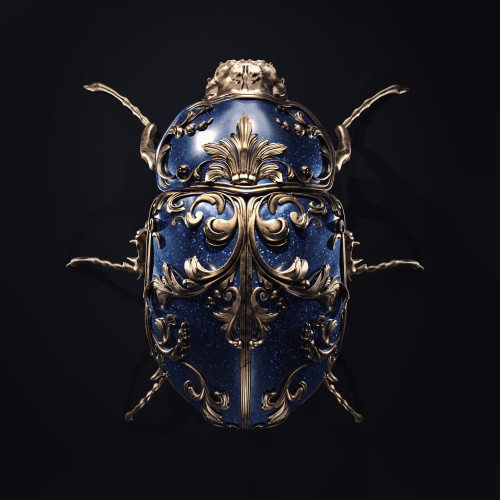
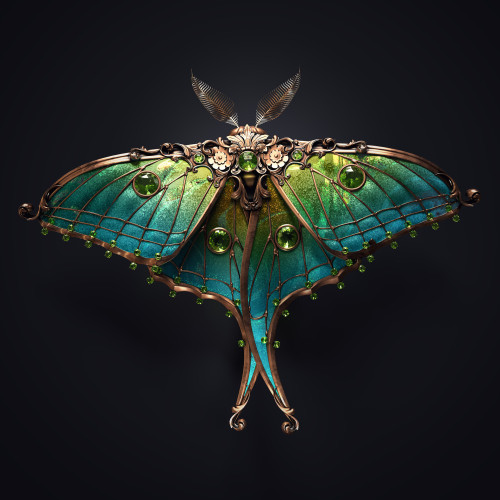
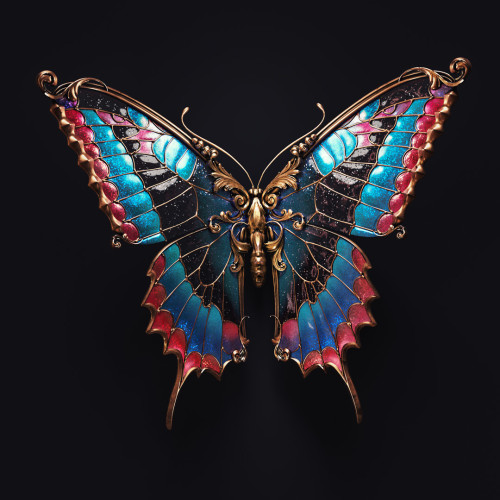

Art by Sasha Vinogradova
Wow this is so imaginative!!
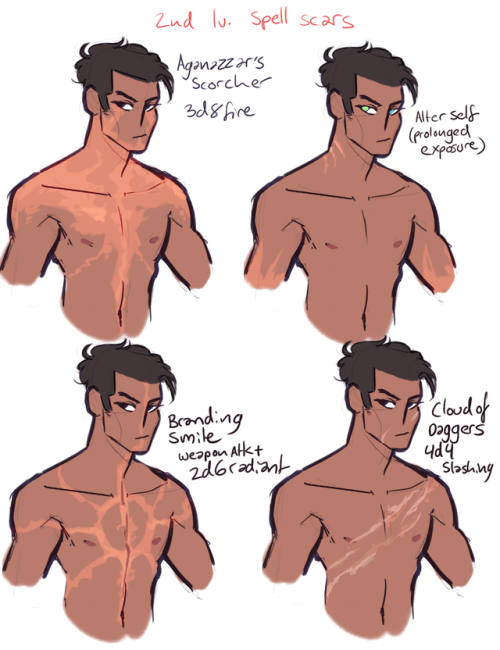





level 2 spell scars :) have fun when you suffer
(Cantrip scars)
(1st level spell scars)
-
 bunbasket liked this · 2 years ago
bunbasket liked this · 2 years ago -
 cerberus-archives reblogged this · 2 years ago
cerberus-archives reblogged this · 2 years ago -
 convenientpincone liked this · 4 years ago
convenientpincone liked this · 4 years ago -
 convenientpincone reblogged this · 4 years ago
convenientpincone reblogged this · 4 years ago -
 loafy-baby liked this · 4 years ago
loafy-baby liked this · 4 years ago -
 el-los-world reblogged this · 4 years ago
el-los-world reblogged this · 4 years ago -
 simmisblog liked this · 4 years ago
simmisblog liked this · 4 years ago -
 lindzem liked this · 5 years ago
lindzem liked this · 5 years ago -
 captainstrangesweetscollection reblogged this · 5 years ago
captainstrangesweetscollection reblogged this · 5 years ago -
 anonymoustalent liked this · 5 years ago
anonymoustalent liked this · 5 years ago -
 shylesbiannerd reblogged this · 5 years ago
shylesbiannerd reblogged this · 5 years ago -
 goodguygarog reblogged this · 6 years ago
goodguygarog reblogged this · 6 years ago -
 goodguygarog liked this · 6 years ago
goodguygarog liked this · 6 years ago -
 nes-quikee reblogged this · 6 years ago
nes-quikee reblogged this · 6 years ago -
 n3squikie reblogged this · 6 years ago
n3squikie reblogged this · 6 years ago -
 n3squikie liked this · 6 years ago
n3squikie liked this · 6 years ago -
 lovingiseasydjh reblogged this · 6 years ago
lovingiseasydjh reblogged this · 6 years ago -
 pokemonandcatsmostly reblogged this · 6 years ago
pokemonandcatsmostly reblogged this · 6 years ago -
 boocatley reblogged this · 6 years ago
boocatley reblogged this · 6 years ago -
 lovingbadguys reblogged this · 6 years ago
lovingbadguys reblogged this · 6 years ago -
 fluffychama reblogged this · 6 years ago
fluffychama reblogged this · 6 years ago -
 lovingbadguys reblogged this · 6 years ago
lovingbadguys reblogged this · 6 years ago -
 pokemonandcatsmostly reblogged this · 6 years ago
pokemonandcatsmostly reblogged this · 6 years ago -
 boocatley reblogged this · 6 years ago
boocatley reblogged this · 6 years ago -
 sha-bang reblogged this · 6 years ago
sha-bang reblogged this · 6 years ago -
 mg-028 reblogged this · 7 years ago
mg-028 reblogged this · 7 years ago -
 ashlaayyy-blog1 reblogged this · 7 years ago
ashlaayyy-blog1 reblogged this · 7 years ago -
 ccomilk reblogged this · 7 years ago
ccomilk reblogged this · 7 years ago -
 zombiebunny97 reblogged this · 7 years ago
zombiebunny97 reblogged this · 7 years ago -
 greatest-fetus reblogged this · 7 years ago
greatest-fetus reblogged this · 7 years ago -
 commandercynthia reblogged this · 7 years ago
commandercynthia reblogged this · 7 years ago -
 beeshavefeelings liked this · 7 years ago
beeshavefeelings liked this · 7 years ago -
 kobepekrard-blog liked this · 7 years ago
kobepekrard-blog liked this · 7 years ago -
 zombiebunny97 reblogged this · 8 years ago
zombiebunny97 reblogged this · 8 years ago -
 werr0r-blog reblogged this · 8 years ago
werr0r-blog reblogged this · 8 years ago -
 nuttyrabbit liked this · 8 years ago
nuttyrabbit liked this · 8 years ago
Persona, Fire Emblem Awakening and Dragon Age Ace fan girl.
201 posts








